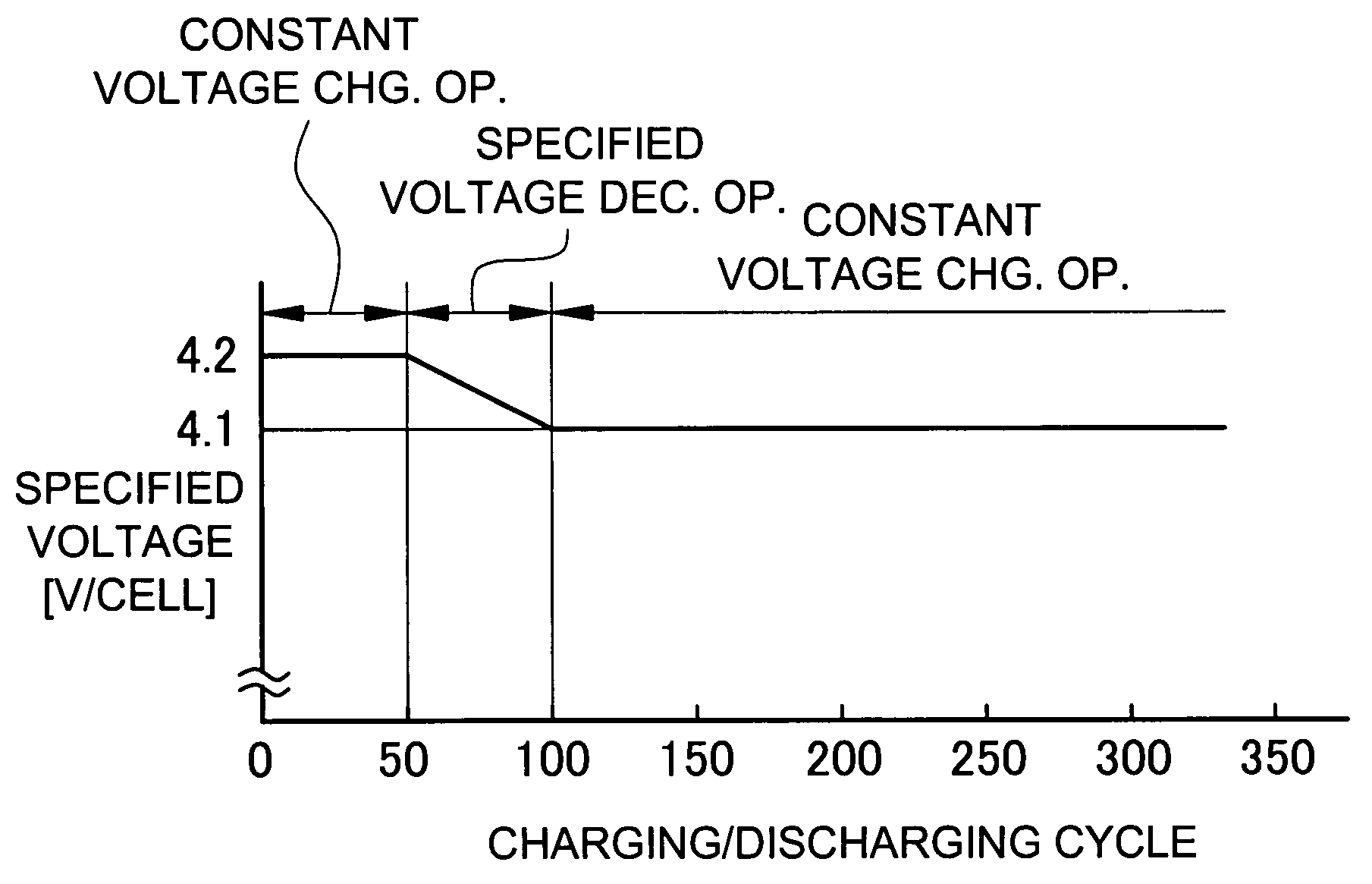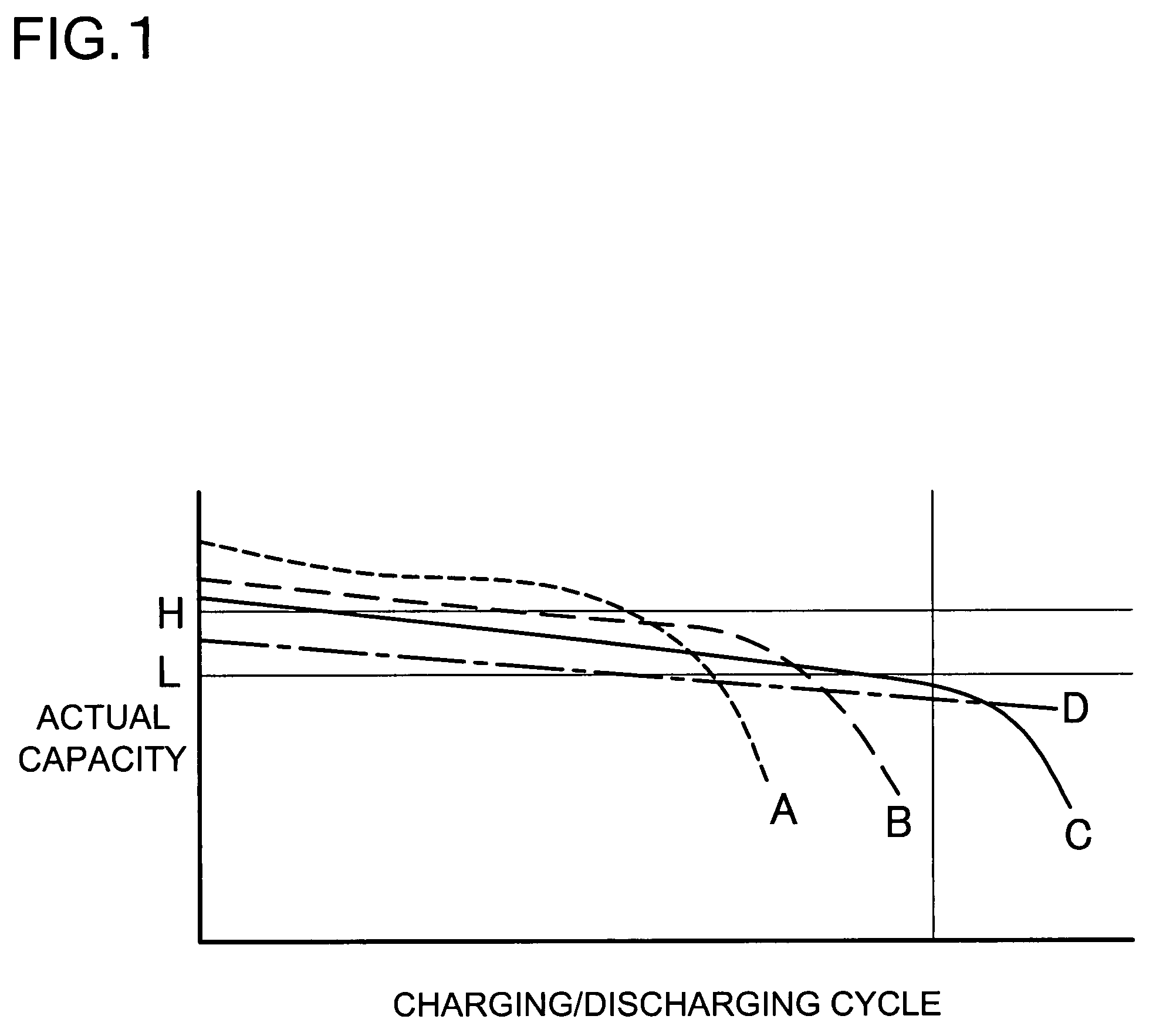Battery charging method
a battery and charging method technology, applied in the field of battery charging method, can solve the problems of short battery life, short remaining life of battery, and short remaining life of battery, and achieve the effects of short remaining life of battery, and high voltage charging
- Summary
- Abstract
- Description
- Claims
- Application Information
AI Technical Summary
Benefits of technology
Problems solved by technology
Method used
Image
Examples
Embodiment Construction
[0032]Dissimilarly to the known methods, in a battery charging method according to the present invention, a battery is charged not at a specified voltage that increases as battery charging / discharging processes are repeated. In the charging method according to the present invention, the battery is charged at a specified voltage that decreases as battery charging / discharging processes are repeated contrary to the known methods. That is, in the charging method according to the present invention, in the case of a new battery, the battery is charged at the specified voltage that is set high so that the actual capacity of the battery increases. On the other hand, when the battery has a deteriorated electrical property caused by repetitions of charging / discharging processes, and thus likely deteriorates, the battery is charged at the specified voltage that is set low to keep the deterioration in check. In this method, although in the case of a new battery, the actual capacity of the batte...
PUM
 Login to View More
Login to View More Abstract
Description
Claims
Application Information
 Login to View More
Login to View More - R&D
- Intellectual Property
- Life Sciences
- Materials
- Tech Scout
- Unparalleled Data Quality
- Higher Quality Content
- 60% Fewer Hallucinations
Browse by: Latest US Patents, China's latest patents, Technical Efficacy Thesaurus, Application Domain, Technology Topic, Popular Technical Reports.
© 2025 PatSnap. All rights reserved.Legal|Privacy policy|Modern Slavery Act Transparency Statement|Sitemap|About US| Contact US: help@patsnap.com



